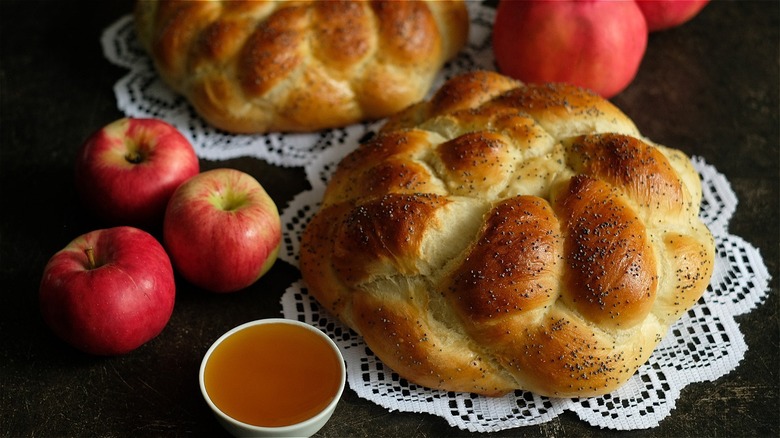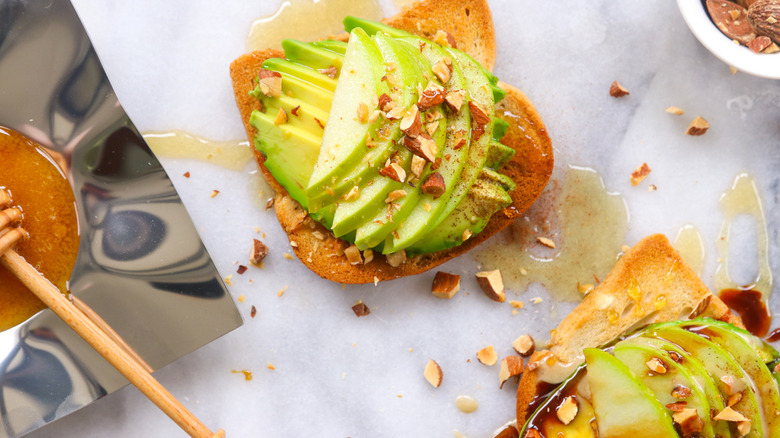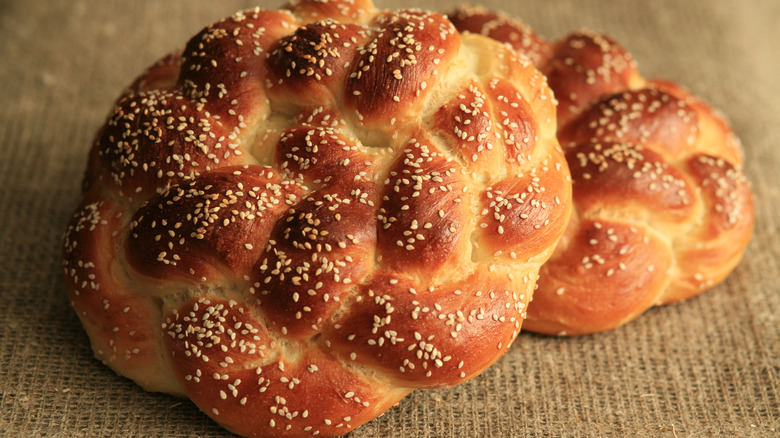Why Rosh Hashanah Meals Are Different Anywhere You Go
From Memphis to NYC to San Francisco, American Jews have different traditions gleaned from a shared heritage and shaped by their distinctive areas. Jews in the diaspora — those who live in communities outside of Israel — have taken up residence in cities and countries all over the world, often adapting their holiday menus to include local ingredients or regional recipes.
Thus, during the Rosh Hashanah celebration, you can often find subtle food-related changes depending on each family's amalgam of cultures. Jews usually come from Ashkenazic (Eastern European) or Sephardic (Spanish and North African) roots. Food blogger Tori Avey explains it this way: "These two groups have the same religious beliefs, but their cooking styles are quite different. Ashkenazi foods might seem more familiar to American cooks (matzo ball soup and gefilte fish), while Sephardic foods tend to be more exotic in terms of flavor (shakshuka and hummus)."
Rosh Hashanah, which translates to "head of the year," is one of Judaism's holiest days. It begins at sundown this Sunday, September 25, and ends Tuesday evening, September 27. Within the diaspora, an extra day is often added to religious observances, although the length of the holiday (one day or two) may be related to an individual's level of observance.
Rosh Hashanah traditions vary according to region
While a Rosh Hashanah meal in Aleppo may differ from one in Antwerp, most holiday meals will have these traditional Jewish food items: matzo ball soup, gefilte fish, round challah (representing the cycle of the year), and a meat dish — usually brisket, roasted chicken or fish. In addition, a balabusta (a Yiddish word for someone who knows their way around a kitchen) with a Sephardic background may also serve Ash-e-Reshteh, a Persian noodle and bean soup, or a tricolor Moroccan salad.
London-based restaurateur and cookbook author Yotam Ottolenghi's Middle Eastern roots are evident in his holiday dishes: roast chicken with saffron, hazelnuts, honey, and sea bass with harissa and rose. (Vegetarians can swap out meat for tofu or jackfruit.) Raised in Israel by Italian-Jewish and German-Jewish parents, Ottolenghi admits his Middle-Eastern cooking style — along with his creative flair — inspire his Rosh Hashanah menu more than his family's European traditions. His holiday meal, per Epicurious, includes eggplant, sweet potato, and figs, mograbiah (a Lebanese couscous) with oven-dried tomatoes, and apple and olive oil cake with maple cream cheese icing.
Shanah tovah!
If you identify more as a cultural or gastronomic Jew than a religious one, or you have been invited to a Rosh Hashanah meal but know little about the traditions, you can usher in the Hebrew calendar year 5783 with these simanim (symbolic foods).
Starting off the new year on a positive note is the reason the meal begins and ends with something sweet — grape wine, raisin challah, apples dipped in honey, and cake made from apple, honey, or dates. A standard Rosh Hashanah greeting is "Shanah tovah," which means good year. If you say "Shanah tovah u'metuka," you are wishing someone a good and sweet year.
Dishes may also have a trendy vibe. On her What Jew Wanna Eat blog, Amy Kritzer describes her apples and honey avocado toast as "millennial." Her website's tagline is "This ain't yo Bubbe's blog."
Pomegranates often figure into Jewish holidays. The holy red fruit is mentioned in the Bible and the Koran. It is said to have 613 arils, which corresponds to the number of mitzvot (good deeds) listed in the Torah. While you are counting your arils, toss a few in your salad, sprinkle them on soup or use them to decorate your honey cake.


